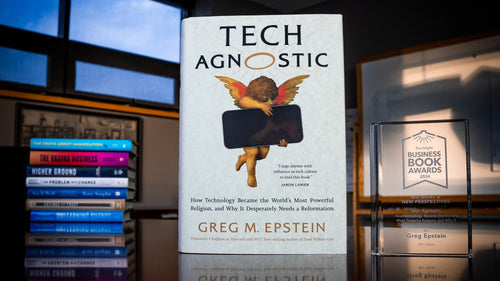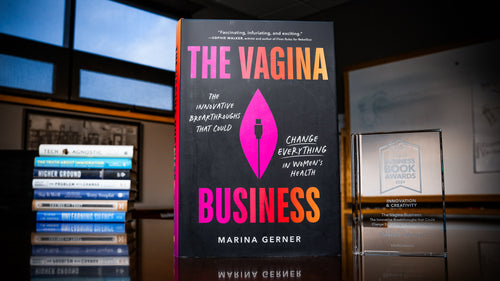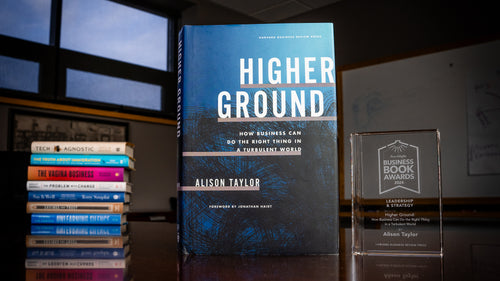New Power: How Power Works in Our Hyperconnected World—And How to Make It Work for You

Thousands upon thousands of words have been written about how social media and digital technologies are radically altering our daily lives and the broader culture. Some of those ways are good, and some, as we know, are deeply troubling and dangerous. In New Power: How Power Works in Our Hyperconnected World—And How to Make It Work for You (Doubleday, April 3, 2018, $27.95, Hardcover), Jeremy Heimans and Henry Timms explore one of the more positive by-products of this era: the disruption of consolidated power. As technology has steadily inched forward, we find ourselves living in the world that was promised at the beginning of the digital revolution. One in which every voice is heard, and finally empowered.
New Power is being championed by the widest range of leaders we've seen in a long time—from Adam Grant and Jane Goodall to Richard Branson and Alicia Garza, co-founder of Black Lives Matter. Did we mention Russell Brand? Yep, he thinks you should read it, too. This book is perfect for political organizers, history lovers, and anyone seeking a broader understanding of these exciting and uncertain times. To find out if it's the next book heading to your TBR stack, enjoy the excerpt below.
Welcome to the New Power World
Power, as philosopher Bertrand Russell puts it, is the “ability to produce intended effects.”
That ability is now in all of our hands. Today, we have the capacity to make films, friends, or money; to spread hope or spread our ideas; to build community or build up movements; to spread misinformation or propagate violence—all on a vastly greater scale and with greater potential impact than we did even a few years ago.
Yes, this is because technology has changed. But the deeper truth is that we are changing. Our behaviors and expectations are changing. And those who have figured out how to channel all this energy and appetite are producing Russell’s “intended effects” in new and extraordinarily impactful ways.
Think of the hoodie-clad barons who sit atop online platforms a billion users strong, tweaking our daily habits, emotions, and opinions. The political neophytes who have raised passionate crowds and won stunning victories. The everyday people and organizations who are leaping ahead in this chaotic, hyperconnected world—while others fall back.
This book is about how to navigate and thrive in a world defined by the battle and balancing of two big forces. We call them old power and new power.
Old power works like a currency. It is held by few. Once gained, it is jealously guarded, and the powerful have a substantial store of it to spend. It is closed, inaccessible, and leader-driven. It downloads, and it captures.
New power operates differently, like a current. It is made by many. It is open, participatory, and peer-driven. It uploads, and it distributes. Like water or electricity, it’s most forceful when it surges. The goal with new power is not to hoard it but to channel it.
[…]
The Ingredients of New Power
People have always wanted to take part in the world. Throughout history, movements have surged, people have organized collectively, communities have built collaborative structures to create culture and conduct commerce. There has always been a dialectic between bottom-up and top-down, between hierarchies and networks.
But until recently, our everyday opportunities to participate and agitate were much more constrained. Thanks to today’s ubiquitous connectivity, we can come together and organize ourselves in ways that are geographically boundless and highly distributed and with unprecedented velocity and reach. This hyperconnectedness has given birth to new models and mindsets that are shaping our age, as we’ll see in the pages ahead. That’s the “new” in new power.
A popular thread on Reddit, the link-sharing platform, crowdsourced memories of growing up in the 1990s, when life felt very different. For those who were there, the posts offered warm nostalgia. For those who weren’t yet born, it told stories of an alien world: The anxiety of waiting for your yearbook photo to arrive, which was “the only time you saw a picture of you and your friends at school.” You only got one shot to get that right, and you never knew how it would turn out. The tension of calling the local radio station, requesting your favorite song, and then waiting, fingers poised on the record button of your tape cassette player, to capture it when it came on. The excitement of stopping by the Blockbuster Video store to rent a movie on the way home. The frustration of going to the library and finding the one book you need has already been taken out or “should be in the stacks but can’t be found.” The tedium of doing math without a calculator because they were banned, the sturdy reasoning being “you won’t have a calculator in your pocket all the time when you grow up.”
Of course, we now have much more than a calculator in our pocket. In today’s world, we all have our hands (quite literally) on what we can think of as a new means of participation. And this isn’t just changing what we can do, but how we expect to engage.
These new means of participation—and the heightened sense of agency that has come with them—are a key ingredient in some of the most impactful models of our time: big businesses like Airbnb and Uber, China’s WeChat or Facebook; protest movements like Black Lives Matter, open software systems like GitHub; and terrorist networks like ISIS. They are all channeling new power.
Think of these as new power models. New power models are enabled by the activity of the crowd—without whom these models are just empty vessels. In contrast, old power models are enabled by what people or organizations own, know, or control that nobody else does—once old power models lose that, they lose their advantage. Old power models ask of us only that we comply (pay your taxes, do your homework) or consume. New power models demand and allow for more: that we share ideas, create new content (as on YouTube) or assets (as on Etsy), even shape a community (think of the sprawling digital movements resisting the Trump presidency).
To grasp the essential difference between old and new power models, think of the difference between the two biggest computer games of all time, Tetris and Minecraft.
You will likely remember the block-based game Tetris, which exploded with the Gameboy craze of the 1990s. The way it worked was simple. Blocks fell down from the top of the screen and the player’s job was to make them fit into neat regular lines. They came down faster and faster until the player was eventually overwhelmed. In old power fashion, the player had a limited role, and you could never beat the system.
New power models work more like Minecraft, now the second biggest game of all time. Like Tetris, it is a clunky block-based game. But it operates very differently. Instead of a model built on top-down compliance, it is a game built from the bottom-up, with players around the world co-creating worlds together, block by block. It relies entirely on participatory energy. In the world of Minecraft, you will find houses, temples, and Walmarts; dragons, caves, boats, farms, and roller coasters; working computers made by engineers; forest fires, dungeons, cinemas, chickens, and stadiums. The players set their rules and create their own tasks. There is no “manual”; players learn from the example—and often the homemade videos—of others. Some players (known as “modders”) are even entrusted with the capacity to alter the game itself. Without the actions of the players, Minecraft is a wasteland. A key dynamic in the world today is the mutual incomprehension between those raised in the Tetris tradition and those with a Minecraft mindset.
The future will be a battle over mobilization. The everyday people, leaders, and organizations who flourish will be those best able to channel the participatory energy of those around them—for the good, for the bad, and for the trivial.
Excerpted from NEW POWER by Jeremy Heimans and Henry Timms. Copyright © 2018 by Jeremy Heimans and Henry Timms. All rights reserved. No part of this excerpt may be reproduced or reprinted without permission in writing from the publisher.
ABOUT THE AUTHORS
Jeremy Heimans is the co-founder and CEO of Purpose, a company specializing in building social movements around the world. In 2005, he co-founded GetUp!, an Australian political organization with more members than all of Australia’s political parties combined, and he is a co-founder of the global campaigning organization Avaaz and the LGBT rights platform All Out. He is a recipient of the Ford Foundation’s 75th Anniversary Visionary Award for his work as a movement pioneer. He has been named one of Fast Company’s Most Creative People in Business.
Henry Timms is executive director of the 92nd Street Y, a cultural and community center that creates programs and movements that foster learning and civic engagement. Under his leadership, the 144-year-old institution was named to Fast Company’s “Most Innovative Companies” list. He is the co-founder of #GivingTuesday, a global philanthropic movement that engages people in close to 100 countries that has generated hundreds of millions of dollars for good causes. He is a Visiting Fellow at Stanford University’s Center for Philanthropy and Civil Society.



